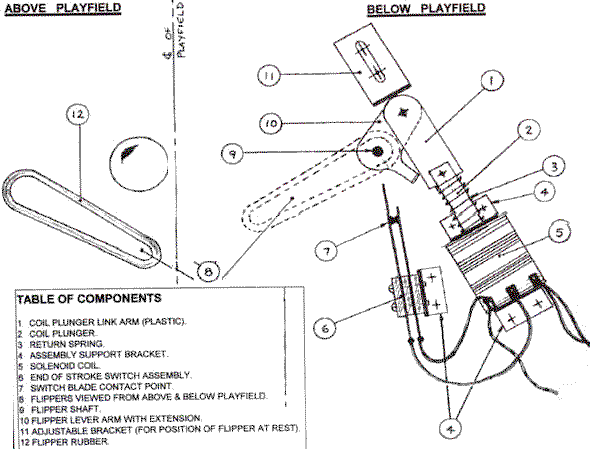Quoted from GTech13:My first question is on voltage. There is an incredible amount of coil choices and everything is rated by gauge and turns. I was told 28V is standard but I would like to confirm that with the community.?
Most of the 'recent' (late 80's, 90's+) machines using 50V for coils. If you actually measure the voltage, you'll usually measure 70V on the 50V rail. I'm using a 70V power supply for my custom machine, and most of my customers are as well.
If you're going to scavenge a power/driver setup from an old machine, that will define what voltage to use. For instance, if you use a donor WPC machine, you'll likely want to use the WPC transformer and power/driver board. Subsequently, your coil voltages will be 50V (70V). The PDB driver boards that I designed and sell can take any DC voltage from 5V-90V; so you can decide what works best for you. If you want powerful flippers, you'll probably want to use at least 50V. If you're going for an older style machine with less powerful flippers, 30-40V might suffice.
My second question is on switching. The popbumpers and slingshots both have switches. Can these switches be used to directly operate the coil or are they solely for scoring and to tell the electronics to fire a transistor? If so, is there a standard "on time" to drive the coils?
Most fairly recent machines (80+?) wire the pop/sling switches to the CPU and let software decide when to pulse the associated coils. Besides giving software control of the coils (for test modes and such), it's nice to have software receive the switch events for scoring, etc. It's also nice to be able to disable the coils after tilts, and possibly at other times during a game.
With our P-ROC board, I'd recommend wiring all switches to the P-ROC and deciding in software when to activate the coils. This applies to the flippers too, where it's nice to disable them at various times (ie. high score entry).
My last question is on general DIY pinball. Is there a community location for DIY? There seems to be very little out there but, considering the complexity, it's no surprise. My machine will be a clone of the 3D Space Cadet Pinball game which use to come on Windows computers. Has anyone ever seen this done?
Thanks
You're always welcome to drop by our forums (http://www.pinballcontrollers.com/forum). Even if you aren't going to use our boards (P-ROC and PDBs), our users are always interested in hearing about new projects and happy to help out when possible.
Good luck!
- Gerry
http://www.pinballcontrollers.com



 Round Rock, TX
Round Rock, TX

